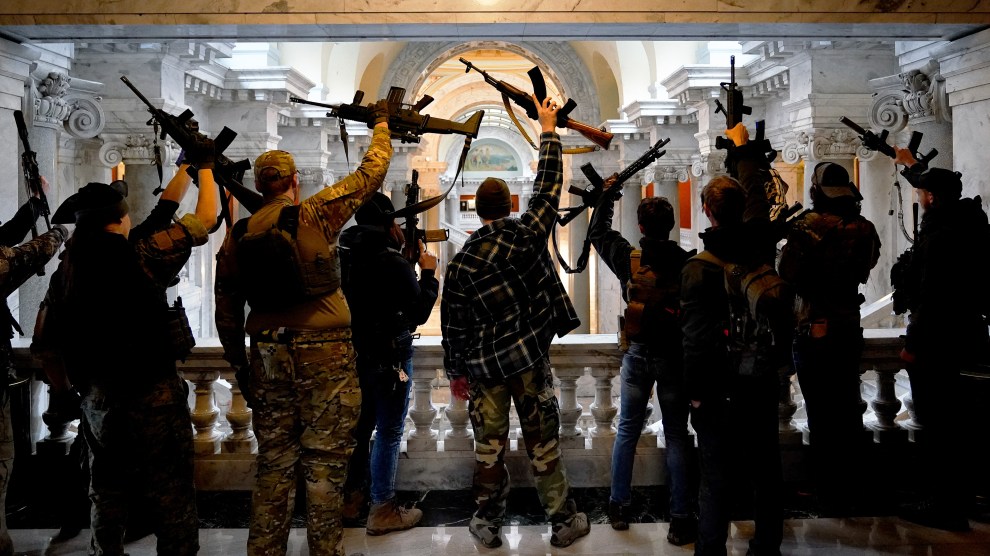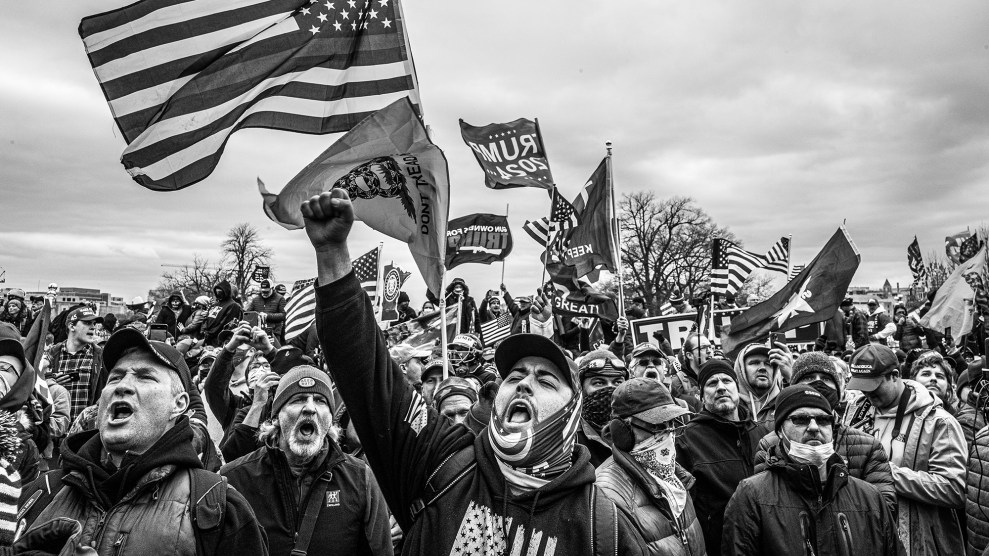
A "Second Amendment rally" at the Kentucky state capitol on January 31, 2020Bryan Woolston/Getty
Over the past decade, amid rising mass shootings and fierce debate over America’s gun laws, the claim that “nothing ever changes” became a political cliché. The frustration was aimed in particular at the federal government—foremost at the failure by Congress to mandate a stronger and more comprehensive background-check system for gun buyers, a policy with long-standing bipartisan support among Americans, including gun owners. Much has changed in recent years, in fact, at the state and local levels, where governments adopted hundreds of regulations either tightening or loosening restrictions on firearms, a mix defined largely along partisan lines. From a national perspective, however, the picture has been evolving more recently in some ominous ways.
The US Supreme Court, now tilted decisively to the right with three Trump-appointed justices, will soon rule on a case widely expected to open the floodgates for many more Americans to carry loaded guns whenever and wherever they want. Broad scientific research has long since confirmed that the presence of more guns throughout society correlates with more gun injuries and deaths.
Since the coronavirus pandemic began in early 2020, gun sales have boomed. “Today, we remain in an unprecedented surge in firearm purchasing that shows no sign of abating and risks becoming part of a new normal for the USA,” observes Garen Wintemute, a leading expert on gun-violence research, in an analysis published in early November in the journal of Injury Epidemiology.
FBI background checks on gun buyers during the first three quarters of 2021 were 60 percent higher than the expected level, with 12.5 million “excess” checks among 33.4 million total, according to the analysis. Even those numbers underestimate purchases, Wintemute notes, since they don’t account for purchases of multiple firearms in a single transaction, nor for the estimated 20 percent of transactions that don’t involve any background checks, such as those between private parties or at gun shows. A least 20 percent of gun purchasers during the pandemic have been first-time buyers, according to multiple surveys included in the analysis, expanding the ranks of the roughly one-third of all Americans who own firearms.
America now has nearly 400 million guns in the hands of citizens, the most of anywhere in the world by far and more than enough to arm every man, woman, and child. But concern about an ever-more locked and loaded nation goes beyond those numbers to include escalating political extremism and rates of homicide in the United States—a convergence of conditions that Wintemute says puts the country “at risk for disaster in the months ahead.”
This could include large-scale political violence, he says. “If that still sounds like unrealistic pessimism, consider what will happen next year when armed voter suppression (surely that’s coming) meets armed voter support. Perhaps vaccine or mask mandates will trigger more than isolated outbreaks of violence. Or perhaps the flashpoint will be a more focused conflict, such as private enforcement of an abortion ban in Texas or the fight over water rights in the ever-hotter and -dryer West.”
Regarding such potential conflict in the West, Wintemute cites far-right political provocateur Ammon Bundy, who made notably stark comments last summer when he suggested to a New York Times reporter that tensions between landowners and the government over water usage in southern Oregon represented an existential threat to farmers and food supplies. “Who cares if there is violence? At least something will be worked out,” said Bundy, who led an infamous armed takeover of an Oregon wildlife refuge in 2016 and is currently running for governor in Idaho. “‘Oh, we don’t want violence, we’ll just starve to death.’ Heaven forbid we talk about violence.”
The dangerous combustion of extremist politics has been a primary focus of mine since the 2020 presidential election: In the weeks leading up to the January 6 insurrection, I reported on how a twice-impeached and defiantly exiting Donald Trump came to be viewed by top national security experts as the leader of a domestic terrorism movement. Since then, my Mother Jones colleagues and I have documented how the grim events of January 6 were on the brink of turning far more deadly at the US Capitol, where pro-Trump rioters were armed with guns to a greater extent than is generally understood by the American public.
Wintemute suggests that the current state of crisis can be seen as an opportunity for change. He points to a Biden administration plan to spend $5 billion over eight years on community-based intervention programs to reduce gun violence, and he highlights initiatives by the federal government to battle domestic violent extremism and to disrupt gun trafficking.
Similarly, constitutional law and gun policy expert Adam Winkler argues that the gun safety movement should shift away from long-running efforts to outlaw assault rifles and large-capacity magazines. “An expansive new interpretation of the Second Amendment by the Supreme Court warrants a reordering of priorities,” he writes. “An agenda that focuses on intervention, beefing up gun law enforcement, and better background checks would not only be more likely to survive in the court, it might also do more to reduce gun violence.” He notes that while assault rifles “look menacing” and have been used in some of the worst massacres, “most mass shootings are actually committed with handguns.”
Another promising solution for preventing mass shootings is the emerging field of behavioral threat assessment, whose interventions using collaborative mental health and law enforcement expertise I first wrote about extensively in 2015. This evolving method and the growth nationwide of threat assessment teams, now mandated for public school systems in more than half a dozen states, is the subject of my forthcoming book, Trigger Points.
It’s also worth recalling who benefits from—and who pays the price for—the nation’s saturation of guns and their overall lax regulation. As we detailed in a 2016 Mother Jones investigation, the secretive US firearms industry is worth at least $8 billion annually. Profits have been growing again of late for gunmakers and companies with related products: In early November, Vista Outdoor announced a quarterly jump in shooting-sports sales of 49 percent, to $566 million, boosted by 65 percent growth in ammunition sales.
The price for America at large is an order of magnitude greater, as we showed in another investigation in 2015. That begins with the terrible human costs of gun violence, now suffered by more than 150,000 gunshot victims each year, and extends to a staggering economic toll that should worry the staunchest of fiscal conservatives. Even before the most recent era of surging gun sales and gun homicides, the financial cost of gun violence in America, as we documented then, amounted to at least $229 billion. That’s billion with a “b”—every single year. It’s a price that has continued to rise.







